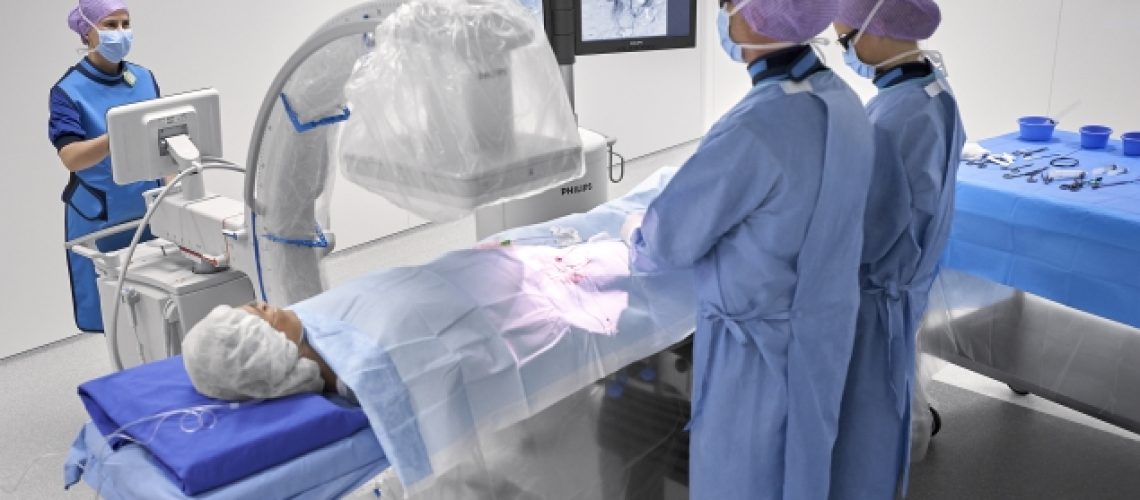COVID-19 has spurred innovation and growth, including the trend toward outpatient care at office-based labs.
As a result of increased calls to keep patients out of the hospital and safe from infection during the pandemic, the Centers for Medicare and Medicaid Services has encouraged procedures in the outpatient setting, according to Lindsay Pack, Office-Based Labs and Hospital Solutions business leader, general manager at health technology company Philips.
“We’ve seen the trend in outpatient care has been going on for over a decade; however, it really did change during the COVID time period,” Pack said. “Physicians are being able to provide the same level of care as in a hospital when that wasn’t an option.”
An office-based lab is an extension of a physician’s office, where procedures such as X-rays or radiology are performed. They are being opened by vascular surgeons, interventional radiologists and other physicians who provide exams, diagnosis and treatment on an ambulatory basis.
This is compared to an ambulatory surgery center, which operates as a freestanding facility, as opposed to a physician’s office where surgical and diagnostic services are provided.
A major difference between office-based labs and ambulatory surgery centers is that ASCs get higher reimbursement.
ASC operating costs are generally higher as a result of additional patient safety and heightened regulatory requirements associated with operating an ASC, according to McGuireWoods.
While OBLs are paid a lower total amount for each procedure, the entire payment is to be paid to these facilities, rather than shared with a hospital, according to Vascular Disease Management.
OBLs reduce overall cost of care to patients and insurers, Pack said.
“There’s a lot of conversation about recognizing the value these centers provide to economics,” Pack said. “We see private payers incentivize patients to go that route. For certain payers, if you go to an OBL, they will have a lower copay compared to inhouse.”
For physicians, one of their main attractions to opening an OBL is the ability to have more autonomy outside the traditional hospital setting.
“More and more physicians are willing to open these centers on their own,” Pack said. “They are interested in the autonomy to control their own destiny.”
WHY THIS MATTERS
This quality-of-life factor helps reduce physician burnout. The patient experience is different and is more personalized, according to Pack.
“There is an overwhelming interest to be able to do what they want to do in these centers,” said Pack, who works with physicians. “I have multiple physicians who come out of research centers who are looking to open their own facility. They don’t have to be part of the hospitals to do that.”
The autonomy also means there is a need to be vigilant about OBL use and the potential for abuse, according to tctmd.
THE LARGER TREND
COVID-19 increased their numbers, but OBLs have grown, following reimbursement changes by the Centers for Medicare & Medicaid Services in 2008 that were intended to encourage lower-cost outpatient care.
Valued at $8.5 billion in 2019 before the pandemic, the U.S. OBL market is expected to reach $14.5 billion by 2027, according to Philips.
In thinking about outcomes, patient experience, staff and user experience, and reducing the overall cost of care, outpatient care hits all these targets, Pack said.
The OBL, said Pack, “is a strategic intentional focus for us.”
——————————————————
Photo courtesy of: Healthcare Finance
Originally Published On: Healthcare Finance
Follow Medical Coding Pro on Twitter: www.Twitter.com/CodingPro1
Like Us On Facebook: www.Facebook.com/MedicalCodingPro







